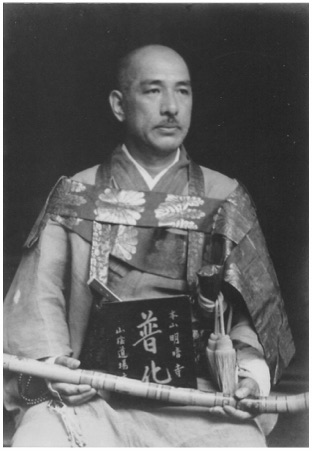
The Shakuhachi Kokinshu (1951) by Kowata Suigetsu
Kowata Suigetsu was a well-known mid-20th Century player, teacher and shakuhachi maker from the Western Totori Shimane region of Japan. His first teacher was Jin Nyodo.
In 1951 Suigetsu began a controversial series of writings on the shakuhachi, which evoked a strong response from players all over Japan when they were published. In 2008, his son released the collected writings as his Father's "Shakuhachi Kokinshu'.
The whole collection is available as a PDF translation in English below.
Please consider his document copyright and ask for permission before using it publicly.
Pertinent Japanese words have been romanized with a degree of casualness as to correct vowel length and pronunciation etc. I have left romanized Japanese words in regular type to make it easier on the eyes. This essay assumes a basic prior knowledge of the history and performance of the shakuhachi. It is not my intention to add to, interpret or ascribe value to any particular Japanese source material that I used. This essay is for other shakuhachi enthusiasts to enjoy as historical writings from a great player.
David Sawyer 2019
PDF download: The Shakuhachi Kokinshu (1951) by Kowata Suigetsu
Excerpt:
"In Fuke shakuhachi there is a saying, ‘ichi on jobutsu’, which means that if you are engaged with one sound for a lifetime, you can reach buddhahood. It can be said as ‘ichi on shōgai’, ‘one sound-one lifetime’. So if one blows shakuhachi, one has to blow for a lifetime.
It is understandable that when one gets older, there is less breath, and therefore less volume. But the tastefulness of the sound is not affected by volume. An old man’s shakuhachi sound has a touch of rust, and it is well known that it has its own good qualities. It is not true that In the world of performing arts, as one gets older, one is ‘less than a lame horse’. "
